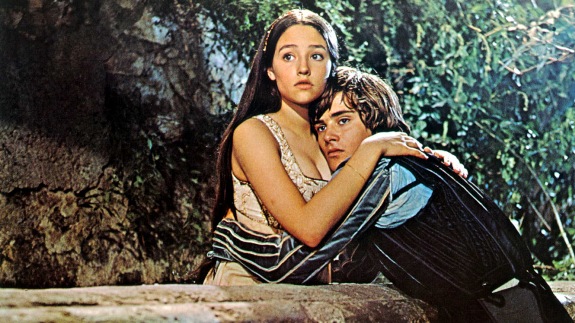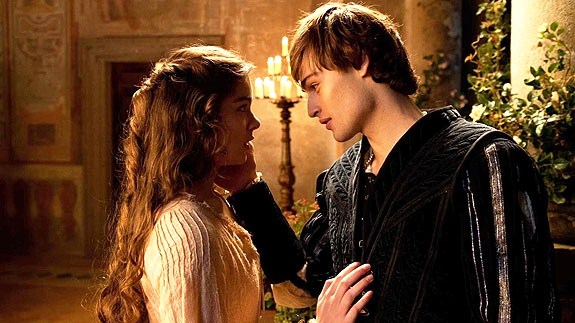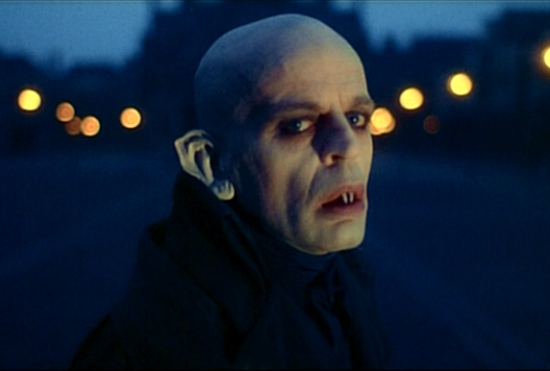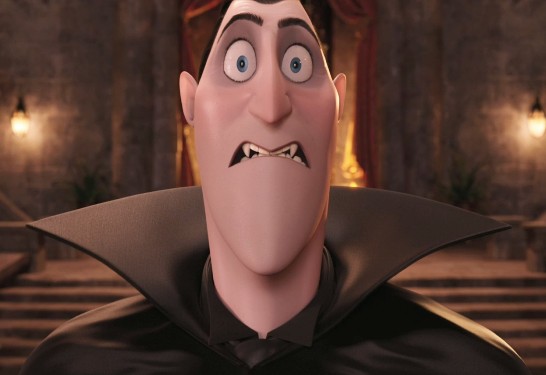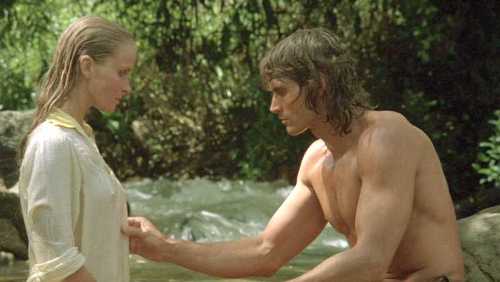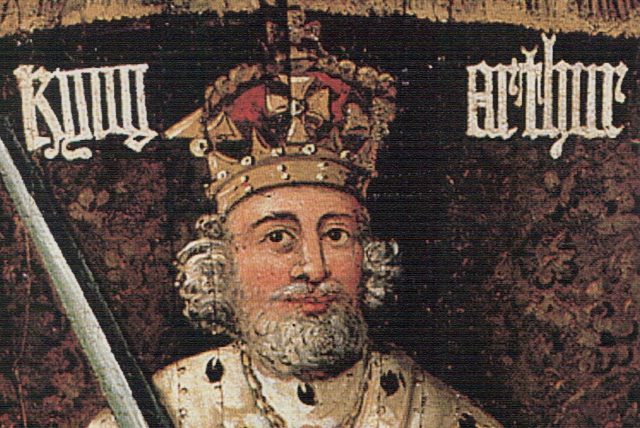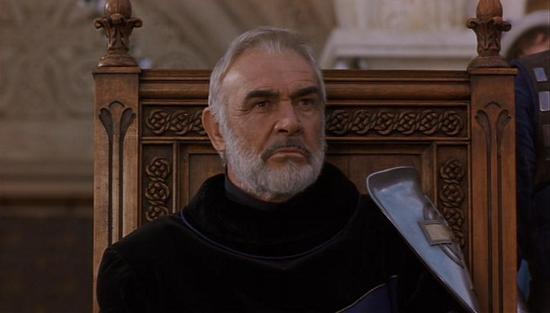Love stories can be found in even the unlikeliest of genres. Oftentimes, some of the best romances are remembered from movies that aren’t even classified as romances. Take Casablanca (1943) for example. It has one of the most famous and passionate love stories at it’s center, and yet today it is classified more as a war drama and less of a romance. It’s also a love story that leaves the two key players apart at the end, and it’s viewed as a noble sacrifice. Indeed, a great love story comes about as a by product of a great story, and whether or not the characters are left happily ever after is determined by what’s best for the story and not by what the audience desires. This often means that tragic love stories are the ones that stick with us the most. There’s a reason why Titanic (1997) became as big of a hit as it did, and it’s not because it’s two leads got a happy ending. Lost love leaves the biggest impact on an audience because it makes finding it all the more precious. A character’s strength can often hinge on how well they are able to overcome loosing the one they love; either they rise above it and are grateful for their brief time together, or they succumb to their grief and become lost as well. Perhaps the most famous of all the tragic romances came from legendary English playwright William Shakespeare when he crafted his own tragic romance titled The Tragedy of Romeo and Juliet.
First published and performed in Elizabethan England in 1597, the tale of Romeo and Juliet has gone on to become perhaps Shakespeare’s most popular piece of work; or at least the most often re-adapted. Depicting the doomed romance between Romeo Montague and Juliet Capulet, the youngest children of two warring families in the fictional Italian city-state of Verona, Romeo and Juliet touches on many themes that have not only redefined the meaning of romance, but has also gone on to set the modern standard for all love stories to follow. Romeo and Juliet’s story involved themes about prejudice, generational differences, youthful rebellion, and even sacrifice. It’s a tale that speaks to many people who fall in love despite social expectations, whether it be someone from another race, religion, culture or sexual orientation. Basically, Shakespeare’s story is about unbound love, and pointing an accusatory finger at those who prevent it from happening; a theme that still remains relevant today. Because Shakespeare’s play continues to resonate with audiences, it’s only natural that there should be plenty of film adaptations to compare and contrast with one another. Since it’s Valentine’s Day, I will be looking at some of the most notable adaptations of Shakespeare’s classic romance, and see how well they defined the characters of both Romeo and Juliet, as well as how well they stuck close to the key themes of the play. And so with that all said, where for art thou Romeo?
LESLIE HOWARD AND NORMA SHEARER in ROMEO AND JULIET (1936)
There were many attempts to adapt the works of Shakespeare for the big screen ever since the inception of cinema. But once the era of talkies came around, it was finally possible to hear the unique Shakespearean iambic pentameter on the big screen. And the great thing about cinema is that it brought classics to the masses, allowing even the common man to experience the works of Shakespeare and others. Romeo and Juliet was one such play that was easily adapted for the screen many times, mostly in the silent era. However, it wasn’t until this lavish 1936 production that we finally got a major Hollywood adaptation of the play. Starring British actor Leslie Howard (of Gone With the Wind fame) and Oscar-winning actress Norma Shearer as the titular couple, this production does it’s best to be true to the original source material. The Shakespearean language is still there, albeit truncated to fit a cinematic run time, and the sets and costuming are all exquisitely crafted. There’s only one problematic thing with this version of the story, and that’s the miscasting of the two leads. The two actors are not at all convincing as Romeo and Juliet, mainly because they are far too old to play the teenage lovers. Norma Shearer was 34 during the making of this film, and Leslie Howard was 43. That is too much of an age difference to make their performances convincing. Truth be told, Howard fares a little better because of his classical training in London theater, but unfortunately Shearer is too Hollywood in her acting style to rise above this. Even still, the movie does try to capture some of the essence of Shakespeare’s play, with production values worthy of the material.
RICHARD BEYMER and NATALIE WOOD in WEST SIDE STORY (1961)
Other modest big screen adaptations came and went over the decades since Hollywood’s first attempt, but in the early sixties, the story made it’s way into our modern pop culture through a grand re-imagining. Dispensing of the Shakespearean text and transporting the story into a modern day setting (in this case the slums of New York City) and adding musical numbers, we were given a fresh new look to the classic story. While West Side Story may not have any of the classic Shakespearean touches, the themes and the emotion of the story remain intact. In fact, I don’t think there has ever been a better representation of the underlying themes of the play better than this musical version. Certainly, the themes of forbidden love and the prejudices that separate our tragic couple are presented vividly here, having the stand-ins of Tony and Maria separated by the street gang rivalries that exist within their lives. By presenting this in a modern day context, this version of the story helps to make these themes resonate even more for the casual viewer. The musical was a smash hit on Broadway, but it’s the movie version that really makes the story soar. Given the grand vision of director Robert Wise and the iconic choreography of Jerome Robbins (both of whom shared the Oscar for Directing that year), West Side Story is both intimate and epic, making it one of the most unforgettable love stories ever put on screen. Richard Beymer and Natalie Wood give very passionate performances as well as the tragic couple, and Wood’s final scene at the end is memorably heartbreaking. All together it is a grand scale retelling of a familiar story that I think would have been given the Bard’s seal of approval.
LEONARD WHITING and OLIVIA HUSSEY in ROMEO AND JULIET (1968)
Probably the greatest straightforward adaptation of Shakespeare’s original play, Italian director Franco Zeffirelli’s version presents the text as it is written with almost reverential treatment. Given lavish production values and a cast full of classically trained British actors, this version is by far the closest Hollywood has actually come to making a true, unedited version of the play. The best bit of casting though belongs to the main characters themselves, mainly because Zeffirelli actually cast teenage actors. Albeit, the actors playing Romeo and Juliet are just a tiny bit older than they are in the text; they had to be at a legal age in order for Zeffirelli to include brief moments of nudity in his film. But, even still, we buy the fact that these two characters are young and deeply in love. Leonard Whiting and Olivia Hussey are certainly the least experienced members of a veteran, stage bred cast, but they still manage to hold their own and carry the picture. Sometimes the lack of experience on their part does show up unfortunately, particularly at the climatic death scene, but the two of them do make it up with the earnestness of their performances. In particular, the two do manage to nail the pivotal balcony scene. Whatever shortcomings the actors may have, they are served well by Zeffirelli’s lavish direction. It wasn’t the director’s first adaptation of Shakespeare (he had made The Taming of the Shrew the year prior with Elizabeth Taylor and Richard Burton) nor was it his last (his 1991 adaptation of Hamlet, with Mel Gibson), but this version of Romeo and Juliet was perhaps his greatest work, and certainly the most authentic retelling the big screen has ever seen.
LEONARDO DICAPRIO and CLAIRE DANES in WILLIAM SHAKESPEARE’S ROMEO+JULIET (1996)
Probably the most notorious retelling of Shakespeare’s play, Australian director Baz Luhrmann’s version is a hyper-stylized take on the original text. Luhrmann keeps the Elizabethan language intact, but he sets the story in the modern day with the warring Montague and Capulet families depicted as street gangs terrorizing the fictional beachfront city of Verona, California. Trust me, West Side Story this is not. While Luhrmann’s style is unique and beautiful to look at, I am unfortunately of the opinion that it’s a bad fit for the material. All the eye candy and sporadic editing is just too distracting and takes away from some of the power of the text. Seeing all these modern clad actors spouting Shakespearean dialogue with editing and cinematography more at home in a music video makes the whole project feel more like style over substance. What ultimately saves this movie, however, is the cast and in particular, the two leads. This was a turning point film for the careers of both Leonardo DiCaprio and Claire Danes; he would go on to super stardom the following year with the release of Titanic, and she would go on to become a multi-Emmy winner in groundbreaking TV shows like Homeland. Here, they deliver outstanding performances as the doomed lovers that feel more natural and assured than any version before, or really after. Again, they are older here than in the text (both in their 20’s) but the acting is so good, it really doesn’t matter in the end. Their performances are emotional and captivating, indicative of how talented they had become as performers. While the movie itself is jarring, the performances help to save it in the end, delivering probably the most heartrendingly raw and intimate versions of the characters we’ve ever seen.
JET LI and AALIYAH in ROMEO MUST DIE (2000)
Just to show the universality of awareness that Shakespeare’s play has on the culture at large, this thriller starring acrobatic and martial arts trained Chinese actor Jet Li and singer/actress Aaliyah shows how you can even implant the story into an action movie. The story is what you would expect from a film like this; Jet Li is an undercover cop investigating the murder of his brother, and while on the job, he ends up falling for the daughter of the very mob boss he’s trying to take down, leading to a forbidden romance that leaves all of them in danger. Now if you’re looking for an authentic retelling of Shakespeare’s play, this is not it. It’s just a silly action thriller with a love story at it’s center. It also has a happy ending, which is definitely not true to Shakespeare’s original intent. But even still, it is interesting to see how pervasive the story has become, where it can even appear as the basis for an action thriller. Certainly the filmmakers want to invoke the Shakespearean connection with a title like Romeo Must Die. But, that’s where the connection ends. Basically, the only link it has apart from that is the theme of forbidden love; although in this case, it is a love that prevails in the end. Jet Li is in fine form here, especially during the well-choreographed fight scenes, and Aaliyah (who’s short-lived career was tragically cut short the following year in a plane crash) is likable as well. In fact, the best thing you can say about the romance in this movie is that the two of them do indeed have chemistry, and you want to see them together in the end. That’s something that most other romantic movies wished they had. So, in the end, not a great adaptation of Shakespeare but a more than passable homage.
ANIMATED SEALS in ROMEO & JULIET: SEALED WITH A KISS (2006)
No joke people, this is a real thing. There is actually an animated, musical retelling of the story of Romeo and Juliet, with seals and other sea creatures starring in the roles. And if there was an adaptation that would rile up Shakespearean purists the most, it would be this one. It does everything cliched thing that sub-par animated movies do; replacing wit with slapstick and pop-culture references and taking short-cuts in storytelling in order to pander to a younger, G-rating audience. But, even with all these faults, the story still does keep many of the traits of the original story intact, like the iconic balcony scene (here depicted as a cliff-side overhang) and even Juliet poisoning herself in order to appeal to the warring factions to stop fighting and let her be with Romeo. Unfortunately, the end result feels more exploitative of the material rather than respectful. The film is actually more interesting as an example of independent film-making than as a movie itself. It was made by former Disney animator and director Phil Nibbelink (The Great Mouse Detective, Who Framed Roger Rabbit, and An American Tail: Fivel Goes West to name a few credits), who crafted the film entirely by himself in his own home studio, using Flash animation software on his computer. With the knowledge that this movie was made by hand entirely by one person, you can’t help but be impressed with the final product. Even though it is far from Disney quality, the final film does have a very polished look, and you can tell that Nibbelink put his heart into it. The final result is admirable, but not a great representation of Shakespeare’s classic. The characters of Romeo and Juliet are especially not served well, as they are merely one-dimensional caricatures. A neat independent oddity, but no where near worthy of the legacy.
DOUGLAS BOOTH and HAILEE STEINFELD in ROMEO & JULIET (2013)
This marks the most recent iteration of the play, and it’s one that goes back to the basics. Set in it’s appropriate time period and with a lavish production and elite cast behind it, this one looks on the surface like a very commendable retelling of Shakespeare’s work. It even has a screenplay adaptation done by Downton Abbey creator Julian Fellowes. Unfortunately, this retelling has none of the passion found in Shakespeare’s writing, nor the wit of most of Fellowes’ scripts. Part of the problem with this production is the performances. Everyone in this production is either over-acting or under-acting, and the latter is especially true for the titular lovers. Douglas Booth is as vanilla a Romeo as we have ever seen, and Hailee Steinfeld shows none of the charisma here as Juliet that she showed so well in her Oscar-nominated performance in the Coen Brothers’ True Grit (2010). It’s clear that the movie is trying too hard to feel epic and grandiose, but in the end it just underwhelms Shakespeare’s text and like Baz Luhrmann’s version, favors style over substance. It’s pretty, but bland. Here, we get Shakespeare by way of Hollywood, and it’s clear by both the direction as well as the marketing behind this movie that the producers were trying to aim this movie version towards the Twilight fan base. Overall, it’s a waste of good talent and a shameless exploitation of a classic story that adds nothing to the overall text and merely just exists to pander to a niche audience.
So, even though Romeo and Juliet the play has had an up and down history on the big screen, it is clear that the characters have been well served by Hollywood, as they have risen to icon status over the years and continue to influence love connections in romances to this day. And it is amazing how even 400 years after it was first written, that it still remains a relevant story today. As long as there are struggles between warring classes across the world, there will always be those who choose to break from their tribes and build bridges through love. It’s an idea that probably was best brought to the screen in West Side Story, which is rightly regarded as an all time great film. But as far as adaptations of the original text go, you’ll probably find Zeffirelli’s to be the most faithful and engaging, although the best versions of the characters themselves may actually be the ones found in Baz Luhrmann’s erratic adaptation; and that’s solely because of the strength of the actors’ performances. But, these are only examples that stick closely to the original source itself. You can find shades of Romeo and Juliet in almost any modern love story; in particular, the ones involving couples who come from different walks of life. As long as forbidden love remains a relevant thing in our culture, the power behind Shakespeare’s original classic will live on. Interestingly enough, it’s not even considered Shakespeare’s greatest work by some of the Bard’s most dedicated fans, which could go to either Hamlet or King Lear, depending on who you talk to. The fact that Romeo and Juliet continues to be Shakespeare’s most widely popular and most-often adapted play is really a big testament to the power of love.



